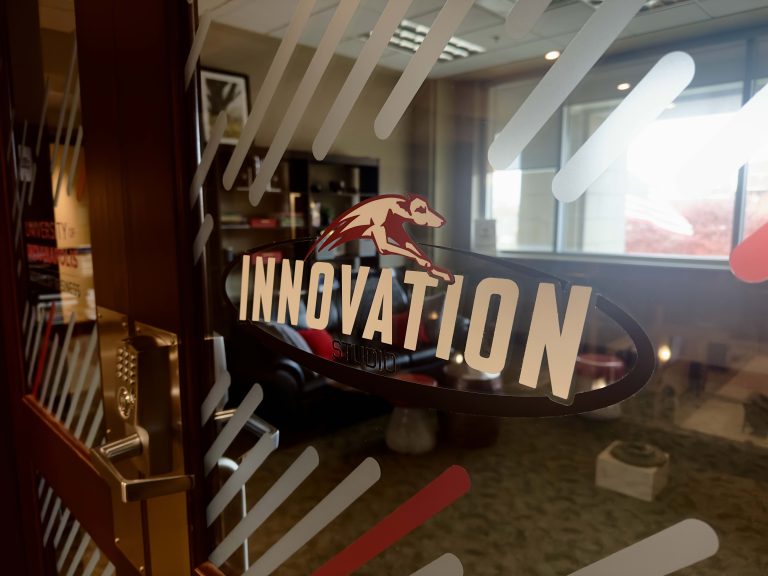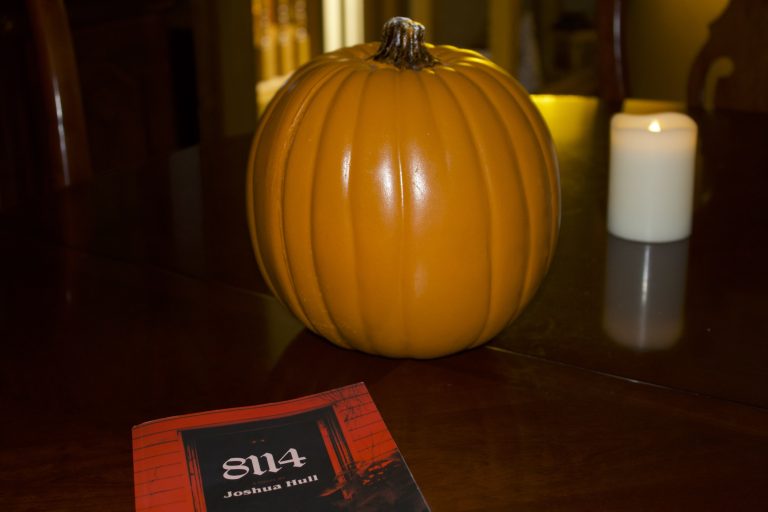It is 2 p.m. on Monday, Feb. 29, the Etchings literary magazine staff gathers in Esch 017. Sometimes they are in Esch 018, but everybody has to work on a computer for this period. Associate Professor and Faculty Advisor for Etchings, Kevin McKelvey, comes in. The staff members log onto their Macintosh computers, sign onto the website Submitable.com and pull up a database filled with more than 200 names and titles.
The names and titles are color-coded in neon green, pink and white. Each name and title belongs to someone who has submitted a piece to Etchings, and the staff has chosen which ones have made the cut. While sending out the acceptance and rejection letters, the staff works together as a team. Editor-in-Chief Dani McCormick rolls over to people who call for her, and Editor-in-Chief Rachel Holtzclaw rushes to people who are in need. But overall, everyone is willing to lend a helping hand, asking their partners at neighboring computers questions about the website or the process.
On Mondays and Wednesdays, from 2-2:50 p.m., ENGL 379: Etchings Literary Journal meets, and this is what the staff does: goes through the submissions and works out every detail to publish the University of Indianapolis’s literary magazine.
According to McKelvey, Etchings showcases literature and artistic work from undergraduates, graduate students, faculty, staff and alumni. Those who are interested can submit up to five poems, three essays, fiction works, nonfiction works with a maximum of 5,000 words and five works of art. McKelvey said the magazine not only accepts stories and essays but also paintings, photos, drawings and photos of 3D work such as sculptures and ceramics. The magazine is published once a semester, and anyone affiliated with UIndy can submit, McKelvey said.

“It’s not just English majors,” McKelvey said. “It’s not just the art studio majors. We really pride ourselves on publishing people outside of those majors…. That’s always nice, to get submissions from everybody. We’ll get submissions from grad students in psychology or occupational therapy…. That makes it a better representation of the campus community and people that we’re trying to include and publish.”
According to McKelvey, the class is open to anyone who wants to join the staff. He said that he would like staff members to have a bit of creative writing or a reading background, but it is not required to be an English major.
As for the way the class runs, McKelvey said he acts as more of a facilitator as a faculty advisor. He does not make decisions about what will be published or how it will look, but rather, he guides the staff through problems or topics and tries to help them consider things that they may have overlooked.
“The class is set up for students to learn how to be editors and do the editorial work as well as the design and layout work,” McKelvey said. “So I’m really kind of hands-off. I’m really there to create an environment where students can learn and grow as editors. So the students make all the decisions…. The students are collectively deciding on submissions, the order and the cover and all the aspects of the literary journal.”
According to senior creative writing major Rachel Holtzclaw, the class is too small to follow a hierarchy, but she and senior creative writing and professional writing major Dani McCormick are the editors-in-chief. Holtzclaw said she deals with the submission side of the staff most of the time, while McCormick focuses on the design and layout. Everyone chips in and helps with all the tasks. Holtzclaw joined the staff because she wanted to learn more about the publishing world.
“It [Etchings] is one of the options for part of our major track,” she said. “We’re supposed to have exposure to the publishing world, and I thought it would be really cool to get on this side of publishing because obviously, as a writer, you’re supposed to be submitting to places. And then we’re looking at students’ work and trying to come up with a system to judge them all fairly and look at them from that perspective. And I think when you are submitting, it’s nice to have that perspective, too, because you might know what the magazines are looking into or looking for.”
Holtzclaw said that the daily tasks of the staff vary day-by-day, but at the beginning of the semester, in general, the focus is getting the word out about the deadline to submit to Etchings. Submissions are sent to submitable.com, which also helps the staff keep track of the person submitting and how many times he or she has submitted in the past.
The deadline this semester was Feb. 15, and Holtzclaw said there were more than 200 submissions. The staff then sits down as a class and reads over each submission and talks about it. Discussions about the pieces take place, and according to Holtzclaw, having diverse viewpoints and opinions is a strength of the staff.
“I do think it’s good [to have different viewpoints and discussions], because then we get a lot more of a diverse magazine than I feel like we would have,” she said.
After talking about the pieces, the class decides what to accept and what to reject. Holtzclaw said the class does its best to have the same criteria all across the board, which can be difficult when dealing with so many submissions. If they do reject a piece, they like to give some advice to help the submitter next time.
“If we see a direction it can go in, we try to give that advice, because it’s more helpful than going, ‘No….’ A lot of time, if we think that it needs work, but they’re minor changes that we could work with the author right away on, then we’ll go ahead and accept it,” Holtzclaw said. “But if it’s a bigger overhaul, like this plot twist needs to change or whatever, we usually send it back with corrections.”
Once everything is chosen, the staff sends out the acceptance and rejection letters. The next aspect of the class is the design of the magazine, including the cover, layout and the order the accepted submissions will go in. They also work with the promotions editor, senior creative writing and English literature major Mirna Palacio Ornelas, on spreading the word and setting up a release party date and location when the magazine is printed. McKelvey said that after the design aspect is done, it is time for copy editing, sending the magazine to the printers and receiving the magazine.
“There’s a lot of work that goes into getting everything on the page and everything printed,” he said. “And it’s a real rush, really, to get it all done. But the process is always so great and the final product, the final magazine, is always so great.”
When contributors are submitting their work, whether it is an essay, short story, poem, photo or 3-D work of art, Holtzclaw said the Etchings staff looks forward to every single submission they get.
“We love seeing the stuff that comes through, whether it’s a really cool poem or an essay…. A lot of the art pieces are amazing, and especially, personally, I never leave this building [Esch Hall]. So it’s really cool to see what the art students are working on, because I don’t get to see that. We genuinely do want to see everything that everyone sends to us. It’s not a chore to look at them. It’s a job, but it’s a fun job.”







